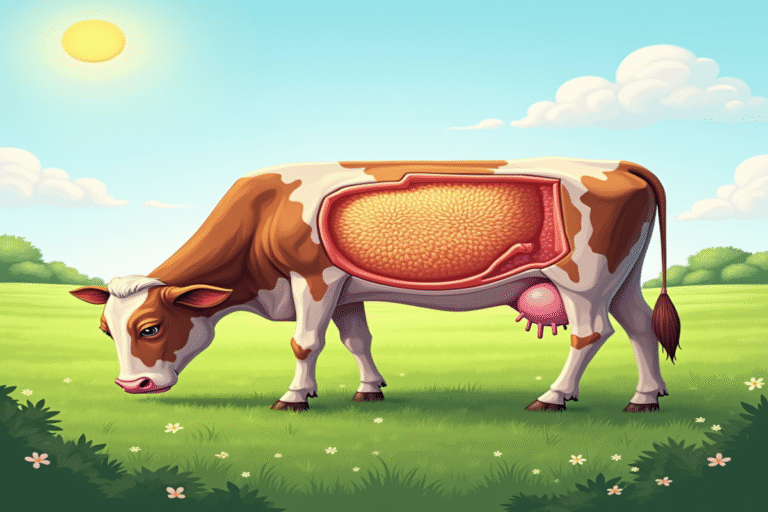Ever wondered how a cow transforms plain grass into nutritious milk? It’s one of nature’s most remarkable biological processes, powered by a digestive system completely different from our own.
The Four-Chambered Wonder
At the heart of this transformation is the cow’s specialized stomach. Unlike our single-chambered stomach, cows have a four-chambered stomach made up of the rumen, reticulum, omasum, and abomasum. This unique structure lets them extract nutrients from plants that humans cannot digest.
The first chamber, the rumen, acts as a massive 50-gallon (190-liter) fermentation vat. When a cow eats grass, it goes into the rumen, where trillions of microorganisms—bacteria, protozoa, and fungi—break down the cellulose in plant cell walls. Mammals cannot produce the enzyme needed to digest cellulose, so cows rely on these microbes in a fascinating partnership known as symbiosis.
The Art of Rumination
The next step is even more interesting. After initial fermentation, the cow brings up partially digested food (called “cud”) from the rumen back into its mouth to chew it again. This process, called “rumination” or “chewing cud,” is essential for further breaking down plant matter and increasing its surface area for microbial digestion.
A cow typically spends 6-8 hours each day eating and another 8 hours ruminating, processing up to 100 pounds (45 kg) of food daily!
The Chemical Factory
As microbes digest the plant fiber, they produce volatile fatty acids (VFAs)—mainly acetate, propionate, and butyrate—which the cow absorbs through the rumen wall. These VFAs supply about 70% of the cow’s energy needs.
The microbes themselves are not wasted. As they multiply and die, they pass into the next stomach chambers and are digested, providing the cow with high-quality protein. Microbial protein can make up to 80% of a cow’s protein intake, transforming simple nitrogen into complex proteins.
From Rumen to Udder
The journey from grass to milk continues as these nutrients are absorbed into the bloodstream and travel to the mammary glands. Specialized cells in the udder use these nutrients to make milk through complex biochemical processes:
- Blood glucose is converted into lactose (milk sugar)
- Blood amino acids are rebuilt into milk proteins like casein
- Fat from the diet and body stores is turned into milk fat globules
This process is so demanding that a high-producing dairy cow may use 60-70% of her total energy intake for milk production. To produce just one gallon of milk, about 400-500 gallons of blood must pass through the udder.
An Evolutionary Marvel
This digestive efficiency is why cows have been so important to human societies for thousands of years. By turning grass—which humans cannot eat—into nutrient-rich milk, cows convert the energy of sunlight stored in plants into a valuable food source for us.
The next time you see cows grazing or enjoy a glass of milk, remember the remarkable biological factory inside these gentle animals—transforming simple grass into one of nature’s most complete foods through a process perfected over millions of years.





